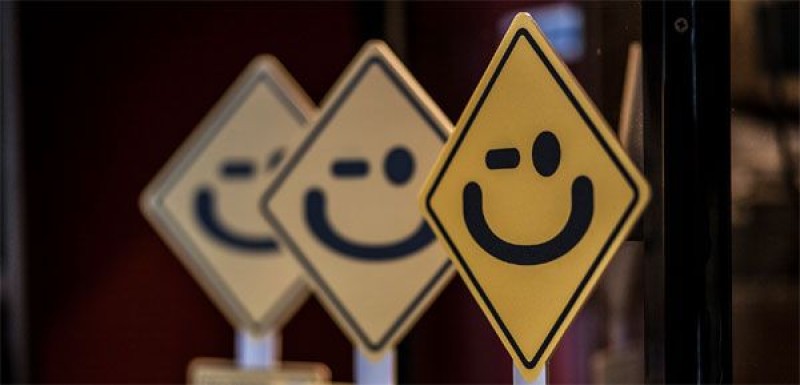Happiness. For many, it is hard to achieve and even more difficult to define. Psychologists, social scientists, and even economists have studied happiness for years. One recent study conducted by University College London found that it matters less whether things are going well for an individual than whether things were going better than expected.
Happiness has also been elusive in the workplace, particularly in recent years as headcounts have been kept low and corporate leaders remain focused on driving higher rates of productivity and profits. Yet studies have shown that employees who are happy and engaged in their work are more successful and are more likely to deliver satisfying customer experiences.
What can organizational leaders do better to drive happiness throughout the enterprise? Jenn Lim is CEO and Chief Happiness Officer at Delivering Happiness, an off-shoot of Zappos.com. Here, she shares her views on the obstacles to achieving happiness in the workplace, along with steps that senior executives can take to drive change.
Customer Strategist: How would you characterize the level of attention being paid by organizational leaders to delivering happiness to customers and company employees?
Jenn Lim: Since the book [Delivering Happiness] came out in 2010, a tipping point occurred. Half of our clients are outside of the U.S. This tells me that people are thinking about happiness differently and people call it different things like well-being or engagement.
CS: What are the primary obstacles to achieving happiness in the workplace?
JL: There are a couple of things. Number one, when we look at the traditional business model, it’s based on profits, the bottom line. For better or worse, there are still a lot of companies operating on that model. If there’s nothing else in the realm of how to be successful in a company, then that’s an obstacle. Whether you’re a CEO or an employee, it’s not just about making money. Since we spend most of our waking hours in the workplace, more emphasis should be placed on achieving happiness.

Also, people are resistant to change. As ideal as happiness in the workplace sounds, a lot of people don’t like change, whether at the C-level or for employees if they think change is required.
CS: What are some steps that can be taken to address this from an organizational standpoint?
JL: Number one is to look at values: what are the values of your company? What is the purpose of your company? Not just identifying those values but aligning with those values. That’s the fundamental DNA required to have happiness in the business model.
Tactically, think about it like a hub and spoke. Especially with large companies, it’s about thinking small. Start in a controlled way—whether it’s one department, several departments or the whole company—the idea is to have champions that are aligned with one another to see it through.
CS: How might this translate into happiness for customers?
JL: Customer service is really important. But to achieve that, focus on the employees first. If you have happier employees you’ll have happier customers and a more sustainable business.
If a person is unhappy in a workplace, there are usually reasons why. Think about making employees happier first. Suddenly it’s not just one department’s objective to make customers happy but everyone’s goal. Also, it’s not just customers who should be focused on, but vendors and business partners too. It’s about delivering happiness to the whole ecosystem.
CS: Tell us about the Happy Business Index and what it’s aimed at measuring.
JL: It’s a measurement we worked on together with Nic Marks of The Happy Planet Index. We’ve collaborated on a business index where you take a 40-question survey to determine the level of happiness of your employees, from an individual standpoint to a macro level, then compare it to other companies. Questions in the survey include ‘Do you feel a sense of progress? Do you feel engaged in your work?’ From the results, companies can see where they are and what they need to improve on.
CS: What are some ways in which decision-makers can respond to the results of the Happy Business Index?
JL: What’s really great about this survey is that the results don’t just show how you compare to other companies. It gives recommendations on how to address these things.
We deal with a lot of companies that are growing fast. But they feel super stressed out. You can derive from these results that your employees are aligned with their jobs but they feel stressed out all the time. They feel they have tons of stuff to do even before they go to sleep at night.
One recommendation for addressing this level of stress is by defining roles and responsibilities better. This way, each person on the team knows what’s what.
CS: What are some ways in which changes in customer and employee happiness can translate into business results?
JL: There are more and more studies coming out of Harvard Business Review and The Economist on the business results of happiness. Profitability increases by 10-to-30 percent and sales increase 10-to-20 percent. And, we know of a top-20 e-commerce company in the U.S. that has seen a 39 percent increase in monthly sales, while monthly absences by employees decreased by 96 percent.
CS: Can you point to an example of a company that has taken happiness to heart and the benefits they’ve been able to obtain?
JL: In-N-Out Burger. What they’ve really done well is making sure employees are focused on first, and that has helped them with consistent quality and customer service. In-N-Out could’ve grown faster in the last 10-15 years, with more locations in more regions. But they chose to focus on employees—making fast food not just a career but a calling, having an In-N-Out university to support growth/learning, etc. These are both big components of sustainable happiness. So they grew in a way that was reflective of their values e.g. ‘quality you can taste,’ and experience with consistency.
Another example is Patagonia. In their own journey, they’ve established happiness not only for their employees, but also for their entire ecosystem including outside of their company. Then you have a happier community.
CS: What are some recommended steps that organizational leaders can take to deliver happiness to customers and employees?
JL: There are lots of different starting points depending on where they are. There are the short-term immediate things you can do and the long-term sustainable things.
Short-term, one question I would ask is how would you do things differently if you wanted to ‘wow’ each time you touch an employee or a customer? How would that change your approach? That little thought will help you interact with your employees and your customers.
Longer term, really think about your company’s values. It’s the DNA of your company. It’s the only way I’ve seen from a long-term view to bind people to a common purpose and value sets from a sustainable standpoint. The economy has its ups and downs so we have to do the best we can with the cards that are dealt to us.















